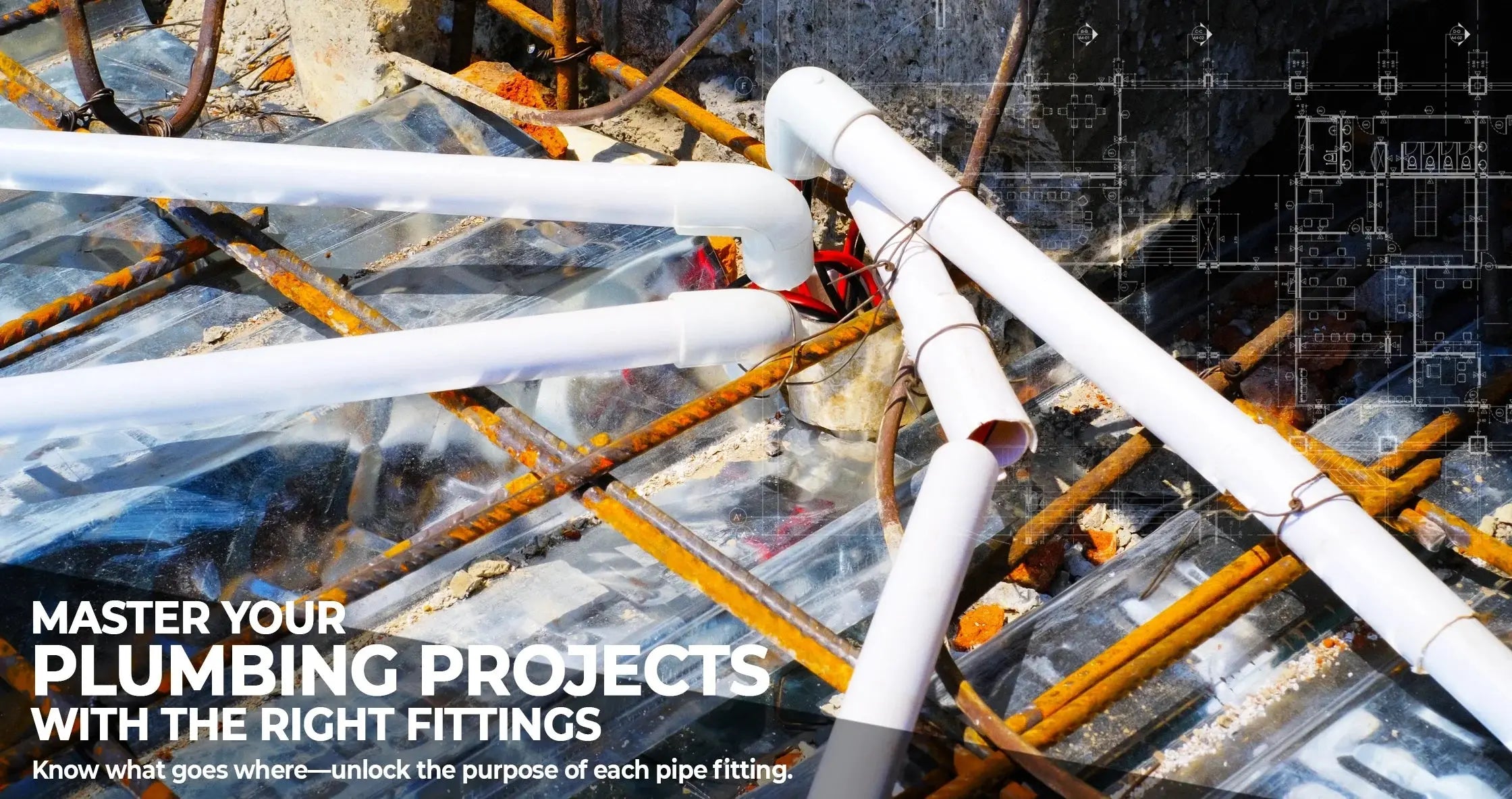Understanding the different types of pipe fittings is crucial for successful plumbing projects. Whether you're a professional plumber or a DIY enthusiast, knowing how each fitting works can help ensure efficient water flow and reliable connections.
Introduction to Types of Pipe Fittings
Pipe fittings are essential components in any plumbing system. They allow pipes to change direction, connect multiple pipes, or control fluid flow. With so many types of pipe fittings available, choosing the right one can seem overwhelming. Below, we'll explore some common types of pipe fittings and their uses.
Elbows: Changing Direction
Elbows are one of the most commonly used types of pipe fittings in plumbing systems. These fittings come in angles of 45° and 90°, enabling plumbers to navigate tight spaces effectively. Elbows made from materials like PVC and stainless steel are durable and corrosion-resistant.
Tees: Branching Off
Tee fittings branch off a main pipeline, creating an efficient layout in water supply systems. Plumbers often use tees when connecting pipes of the same diameter or reducing one branch with a reducing tee.
Connecting Pipes with Couplings and Reducers
Couplings and reducers play a vital role in connecting and adjusting pipe sizes within plumbing systems.
Couplings: Joining Pipes
Couplings connect two pipes of the same or different diameters. They are available in threaded, compression, and slip-fit variants, making them versatile for various plumbing needs.
Reducers: Adjusting Pipe Sizes
Reducers join pipes of varying diameters. Concentric reducers align the centerline of pipes, while eccentric reducers offset the connection to prevent backflow.
- Concentric reducers work best in vertical systems.
- Eccentric reducers are ideal for horizontal systems.
Ensuring Flexibility with Unions and Adapters
Unions and adapters provide flexibility and adaptability in plumbing systems.
Unions: Assembling and Disassembling
Unions allow pipes to be assembled and disassembled without causing system damage. They are particularly useful in areas requiring regular maintenance.
Adapters: Connecting Different Materials
Adapters connect pipes made from different materials or with different diameters. Male or female adapters link threaded pipes to non-threaded ones, ensuring compatibility between diverse pipe types.
Sealing and Controlling Flow with Caps, Plugs, and Valves
Proper sealing and flow control are critical for effective plumbing systems. Caps, plugs, and valves achieve these objectives.
Caps and Plugs: Sealing Ends
Caps seal the ends of pipes from the outside, while plugs seal them from the inside. These fittings are useful during testing phases or for future development plans.
Valves: Regulating Flow
Valves regulate the flow of liquid or gas within a pipeline. Examples include gate valves, ball valves, and check valves, which ensure system regulation and safety.
Specialized Fittings for Unique Applications
Some pipe fittings cater to specialized applications, such as flange fittings and bushings.
Flange Fittings: Secure Connections
Flange fittings securely connect two pipes or a pipe to equipment. Bolted together, they create strong, leak-proof seals, making them ideal for industrial settings.
Bushings: Reducing Diameter
Bushings reduce the diameter of a pipe, allowing smaller pipes to connect to larger ones. Their configurations vary depending on the application, ensuring versatility in plumbing setups.
Conclusion
In conclusion, understanding the types of pipe fittings and their applications is key to achieving plumbing success. From elbows and tees to unions and adapters, each fitting serves a specific purpose. By selecting the appropriate fittings for your plumbing project, you can ensure efficient water flow, reliable connections, and long-term durability. Remember, consulting with a qualified plumber can help you make informed decisions about fittings and other plumbing components.
Frequently Asked Questions (FAQ)
Here are answers to some common questions about pipe fittings:
What Are the Most Common Types of Pipe Fittings?
The most common types of pipe fittings include elbows, tees, couplings, reducers, unions, and adapters. Each type serves a unique function in plumbing systems.
How Are Pipe Fittings Measured?
Pipe fittings are typically measured by the nominal size of the pipe or inner diameter. The most common thread type is NPT (National Pipe Thread), which follows American National Standard Pipe Thread standards.
What's the Difference Between Pipe Fittings and Tube Fittings?
Pipe fittings are designed for hollow, round lengths meeting specific schedules in wall thickness. Tube fittings, however, can be square, rectangular, or round and are based on exterior diameter and wall thickness rather than adhering to a particular schedule.


